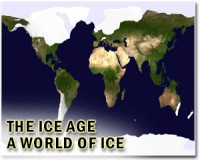| . |  |
. |
Lima (AFP) Feb 23, 2011 A glacier on Peru's Huaytapallana Moutain shed half its surface ice in just 23 years, officials said Wednesday, reinforcing concerns of climate change's growing threat to fresh water resources. "Recent scientific studies indicate that between June 1983 and August 2006, the glacier has lost 50 percent of its surface ice," Erasmo Meza, manager of natural resources and the environment in the central Andean region of Junin, told the official Andina news agency. He said the five square kilometers (1.9 square miles) of ice shrinkage on Huaytapallana, whose steep, jagged glacier and breathtaking lakes are popular tourist draws, was caused by global warming and presents growing problems in agriculture, health, fresh water resources and disaster mitigation. To prevent further deterioration on the 5,557-meter (18,230-foot) mountain, the regional government of Junin is developing a project to declare Huaytapallana a natural conservation area -- a move Meza said could help prevent damage from a mining company doing a feasibility study in the area. Glacier studies are often carried out in the Andes, the so-called "Roof of the Americas" region comprising more than 100 peaks above 5,000 meters (16,500 feet). But the Huaytapallana studies show a sharper rate of glacial melt than other major findings. A 2009 World Bank-published report said that in the last 35 years, Peru's glaciers have shrunk by 22 percent, leading to a 12 percent loss in the amount of fresh water reaching the coast -- home to most of the country's citizens. It also warned that Andean glaciers and the peaks' permanent snow caps could disappear in 20 years if no measures are taken to tackle climate change, echoing the findings of Peruvian agencies. One of the most threatened is Pastoruri, a 5,200-meter (17,060-foot) peak in Huascaran National Park in northern Peru that is home to Huascaran Mountain, Peru's highest point at 6,768 meters (22,200 feet).
earlier related report The huge iceberg crashed into a lake shortly after the 6.3 magnitude tremor rocked the South Island on Tuesday and created waves up to three metres high for 30 minutes which rocked two sightseeing boats on the lake at the time. The enormous iceberg -- estimated to weigh 30 to 40 million tonnes -- began ripping off the Tasman Glacier at Aoraki Mount Cook National Park accompanied by a loud noise which sounded like a rifle shot, a local tourism official said. Aoraki Mount Cook Alpine Village tourism manager Denis Callesen said locals had been expecting a major iceberg to drop from the glacier for the past month, but the "curve ball" was that the event was caused by an earthquake. "The earthquake that we felt here was a swaying motion for about a minute, then it stopped and then it swayed for about another minute," he told AFP. "Within about a minute of that happening, the staff at the lake heard from five kilometres away (from the glacier) a sound that sounded like a rifle shot and then over the next two minutes all the events started to unfold. "I have absolutely no doubt in my mind that the earthquake was the trigger." The Department of Conservation confirmed that a "large chunk" of the glacier fell into the lake but was unable to say if this was caused by the earthquake, which was only felt lightly around Mt Cook some 150 kilometres (93 miles) from the epicentre. "You could argue whether the earthquake precipitated it or not -- the fact is that the terminal face was about due to carve anyway," area manager Richard McNamara told AFP. "The estimate of around 30 to 40 million tonnes of ice would be at a rough estimate about right." McNamara said the one-kilometre long piece of ice which carved off the glacier had broken into smaller icebergs, some of which were now about 200 metres (650 metres) in length, and towering up to 50 metres above the lake. "It carved in one big lot; a face about a kilometre long carving is a spectacular sight," McNamara said, adding that the iceberg would then have popped up to the water like a porpoise before starting to break into smaller pieces. He said that particular face of the glacier had experienced similar events in recent years and it was not unusual to see huge icebergs in the lake. However, the 7.0 magnitude quake which hit New Zealand in September had not produced a similar event at Mt Cook, he said.
Share This Article With Planet Earth
Related Links Beyond the Ice Age
 Massive iceberg shears off glacier after quake hit
Massive iceberg shears off glacier after quake hitChristchurch (AFP) Feb 23, 2011 A 30 million tonne block of ice sheared off a New Zealand glacier just minutes after a violent earthquake devastated the city of Christchurch, officials said Wednesday. The huge iceberg crashed into a lake shortly after the 6.3 magnitude tremor rocked the South Island on Tuesday and created waves up to three metres high for 30 minutes which rocked two sightseeing boats on the lake at the tim ... read more |
|
| The content herein, unless otherwise known to be public domain, are Copyright 1995-2010 - SpaceDaily. AFP and UPI Wire Stories are copyright Agence France-Presse and United Press International. ESA Portal Reports are copyright European Space Agency. All NASA sourced material is public domain. Additional copyrights may apply in whole or part to other bona fide parties. Advertising does not imply endorsement,agreement or approval of any opinions, statements or information provided by SpaceDaily on any Web page published or hosted by SpaceDaily. Privacy Statement |